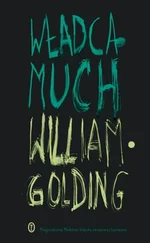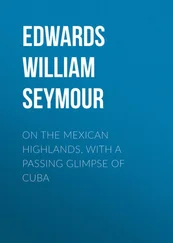William Edwards - Through Scandinavia to Moscow
Здесь есть возможность читать онлайн «William Edwards - Through Scandinavia to Moscow» — ознакомительный отрывок электронной книги совершенно бесплатно, а после прочтения отрывка купить полную версию. В некоторых случаях можно слушать аудио, скачать через торрент в формате fb2 и присутствует краткое содержание. Жанр: foreign_antique, foreign_prose, Путешествия и география, на английском языке. Описание произведения, (предисловие) а так же отзывы посетителей доступны на портале библиотеки ЛибКат.
- Название:Through Scandinavia to Moscow
- Автор:
- Жанр:
- Год:неизвестен
- ISBN:нет данных
- Рейтинг книги:4 / 5. Голосов: 1
-
Избранное:Добавить в избранное
- Отзывы:
-
Ваша оценка:
- 80
- 1
- 2
- 3
- 4
- 5
Through Scandinavia to Moscow: краткое содержание, описание и аннотация
Предлагаем к чтению аннотацию, описание, краткое содержание или предисловие (зависит от того, что написал сам автор книги «Through Scandinavia to Moscow»). Если вы не нашли необходимую информацию о книге — напишите в комментариях, мы постараемся отыскать её.
Through Scandinavia to Moscow — читать онлайн ознакомительный отрывок
Ниже представлен текст книги, разбитый по страницам. Система сохранения места последней прочитанной страницы, позволяет с удобством читать онлайн бесплатно книгу «Through Scandinavia to Moscow», без необходимости каждый раз заново искать на чём Вы остановились. Поставьте закладку, и сможете в любой момент перейти на страницу, на которой закончили чтение.
Интервал:
Закладка:
Therefore, do you wonder, as I stroll about this fine old city, and look into the unhopeful, wistful faces of its plainly clad, not over-rich nor over-busy people, that I begin to comprehend why Copenhagen holds the highest record for suicides of any city in the world, and why so many of her vigorous, and alert and capable, young men continually forsake their native land for the greater opportunities and freer political and industrial atmosphere of the United States?
The Dane always gets on if you give him half a chance. He is called the “Frenchman of the North.” Graceful and supple in his manners, with a mouthful of courtesies of speech, he is naturally a social diplomat. The blunt Norwegian calls him a fop. The martial Swede sneers at his want of fight. But the Dane has always held his own, and as a financier, a diplomat and man-of-the-world able to make the best out of the situation he may be in, he still gives proof of possessing his full share of the Scandinavian brain.
IV
Elsinore and Kronborg – An Evening Dinner Party
We left Copenhagen Friday evening, about four o’clock, from the Nordbane station. We were in plenty of time. Nobody hurries in Denmark. The train of carriages, with their side doors wide open, stood on the track ready to start. Prospective passengers and their friends moved about chatting, or saying good-bye. It was a local train to Elsinore, where it would connect with the ferry across the Sund to Helsingborg and there with the through express to Stockholm and Kristiania, a night’s ride. We would go to Elsinore, and there spend the night, and go on by daylight in the morning.
A good many acquaintances had come down to see us off, just for the sake of friendliness. I had kissed all the rosy-cheeked Froekens and been kissed by the Frus , having dexterously escaped the embraces of the men, when there loomed large before me an immense Dane, near six feet high and proportionate in girth, brown-bearded and blue-eyed, holding an enormous bouquet in either hand, an American flag waving from the midst of each. He made straight for[Pg 31][Pg 32] me, folded me up among the flowers and kissed me joyfully on either cheek, and all before I really knew just what had taken place; then he doffed his hat, and bowing profoundly, presented first to me and then to H one of the bouquets with which he was loaded. And these bouquets were tied up with great white ribbons! Of course, we were evidently but newly wed. We suddenly became of interest to the entire company. Nor was there escape, for General C is well known and popular in Copenhagen. Others now came up and were introduced, and H and I held a levée right then and there, and of kisses and embraces I made no count.
The ride was along the Sund , that lovely stretch of salt water, only a few miles wide, which joins the Baltic Sea and the Atlantic. It is more like the Hudson River below West Point than anything I know, except that the shores are low and more generally wooded to the water’s edge. Or, perhaps I should say that it is another and narrower Long Island Sound, as you see it a few miles out from Jamaica Bay. The busy waters were alive with a multitudinous traffic from Russia and Germany and Sweden and Denmark itself, and the fishing vessels that abound along these coasts. Here and there villas and fine country houses peeped out among the trees. The Sund is the joy of the Dane. He loves it, and the stranger who looks upon it does not forget it. One then understands why the Danish poets have sung so loudly of it.
Our way lay through much cultivated land, market gardens sending their produce to Copenhagen, dairy farms where is made some of that famous Danish butter every Londoner prefers to buy, and which is sold all around the world. Here and there we passed a little town, always with its sharp-steepled Lutheran church and dominie’s snug manse along its side. The church, the Lutheran church in Denmark, is no trifling power. It is as bigoted and well entrenched as is the Roman hierarchy in Mexico and Spain. We should have liked to be wedded in the Vor Frue Kirke, where the dear old grandmother had been married. But it is a Lutheran church, and we were Dissenters, and without the pale. Nor could we present the necessary proof. We had no papers to show we had been duly born. Nor had we legal documents to prove that our parents were our very own. Nor could we show papers in proof that we had been christened and were legally entitled to our names, nor that we had been regularly confirmed. Without these documents, sealed and authenticated by the state, and in our case also by the United States, no Lutheran pastor would have dared to try and make us one. So we ran the gauntlet of less stringent English law, in itself quite bad enough, and lost the experience of the quaint Danish ceremonial in the noble church.
At the fine big Government station in Helsinoere (Elsinore) – for the Government owns and runs the railroads in Denmark, just as it does in Germany and much of France – we were met by an aunt and uncle and cousin of H’s. They were a charming old couple, and the son was a young naval engineer (shipbuilder), working in the ship yard at Helsinoere. All have lived in America and speak our tongue. We were to dine with them and spend the evening, when General and Mrs. C would go home on the last train at 10 p. m. I left the ladies together, while D and I strolled over to the ancient, yet formidable, fortress of Kronborg, which for centuries has commanded the gateway to the Baltic. Built of Norwegian granite, when erected it was believed to be impregnable. Its casemates, lofty walls, turrets and towers frowned threateningly across the three-mile strait to Helsingborg in Sweden, and no boat sailed past except it first paid the dues. To-day, these walls of rock, these ramparts in the air, no longer terrify the mariner. Sund taxes are no longer levied! The ancient fortress does little else than fire an occasional salute. But the Danes still love and honor it, and a few soldiers are stationed in it, a solitary guard.
A vista of the Sund I tried to kodak from the top of the great tower, and I bribed a soldier for a dime to let me take his manly form, although a camera is forbidden within the precincts of this place of war.
But Kronborg is famous for other things than mere Danish tolls and wars. Kronborg it is, where Hamlet’s shade still nightly wanders along the desolate ramparts. There it is that the Danish prince beheld his father’s ghost. There he kept watch at night with Horatio and Marcellus. And close by in the park of Marienlyst Castle is Hamlet’s grave. We did not see it, but many pilgrims do.
Then we descended into the deep dungeons, or part of them, and a pretty, rosy-cheeked, blue-eyed Danish lass told us tales of Holger Danske, who lives down in the deepest pits, whose long white beard is fast grown to the table before which he sits, and who is to come forth some day and by his might restore to the Danish race its former great position on the earth; and she told us also of the human tragedies which have in past ages been enacted in these keeps. She spoke in soft, lisping, musical Danish, the only sweet Danish I have heard; for the Copenhagen speech is jerky, the consonants are chopped short, and the vowels are deep gurgled in the throat, difficult for foreign ears to comprehend.
After seeing the fortress, we visited an ancient monastery, suppressed when the Roman church was driven from these northern Lutheran lands, and now become an Old Ladies’ Home – shocking transformation in the contemplation of those monkish shades which may yet roam the forsaken cloisters! – of which institution the old uncle is now Superintendent with Government pension for life!
Читать дальшеИнтервал:
Закладка:
Похожие книги на «Through Scandinavia to Moscow»
Представляем Вашему вниманию похожие книги на «Through Scandinavia to Moscow» списком для выбора. Мы отобрали схожую по названию и смыслу литературу в надежде предоставить читателям больше вариантов отыскать новые, интересные, ещё непрочитанные произведения.
Обсуждение, отзывы о книге «Through Scandinavia to Moscow» и просто собственные мнения читателей. Оставьте ваши комментарии, напишите, что Вы думаете о произведении, его смысле или главных героях. Укажите что конкретно понравилось, а что нет, и почему Вы так считаете.












